24H Competition 8th edition winners rethink the metropolitan "non place"
By Bustler Editors|
Thursday, Nov 19, 2015

Related
The results are out for the 8th edition of the 24H Competition. Created by ideasforward, each competition theme highlights various social issues, climate change, humanitarian causes, and modern sociologic problems. As usual, the prompt is only revealed on competition day and participants must think on their toes, as they only have 24 hours to complete their entries.
The 8th edition had participants revive a metropolitan "non place" — or unused spaces within urban cities — into enticing social spaces. Due to the rapid growth of today's urban cities, "non places" are defined as spaces that aren't considered to have enough value to be "real" places. Examples include empty parking lots, dead ends, abandoned railroads, the area underneath a bridge, and so forth.
At the end of the competition, the jury selected three prize winners and seven honorable mentions.
Check out the winning ideas and some of the jury's comments below.
1st Place: Wilhelm Scheruebl, Therese Leick (Vienna, Austria)
Jury comments:
"'Out of the box'. A perfect understanding of the nature of non-places. The material worked is between the urban voids and everyday brightness. It is in fact the trips that the nature of non-places better is revealed. A risky response but above all, very aware.“ — Pedro Novo
“A very interesting and original way of looking at the problem, remembering that in non.places there is always a discontinuity in-between local urban tissues, sometimes 'voids' other times massive and globalized zones. Very communicative panel and very clear and well defined solution, an installation underlining concept.” — Carlos Lampreia
“Simplicity in the proposal with significant (non) place awareness impact. Although with a side-effect impact on the place, origin of the selected (non)places type (residue places around significant monuments), the project proposes a double impact, dissolving the non-place awareness with magnification of the original place itself. Partially hides for later reveal it.” — João Rocha
”This proposal is the most realistic and viable one, however it doesn’t get deeper into imagination or exploration. Furthermore this project can became true with little perfect so it is perfect to build it and to offer an experience.” — Rafael Gonzalez del Castillo Sancho
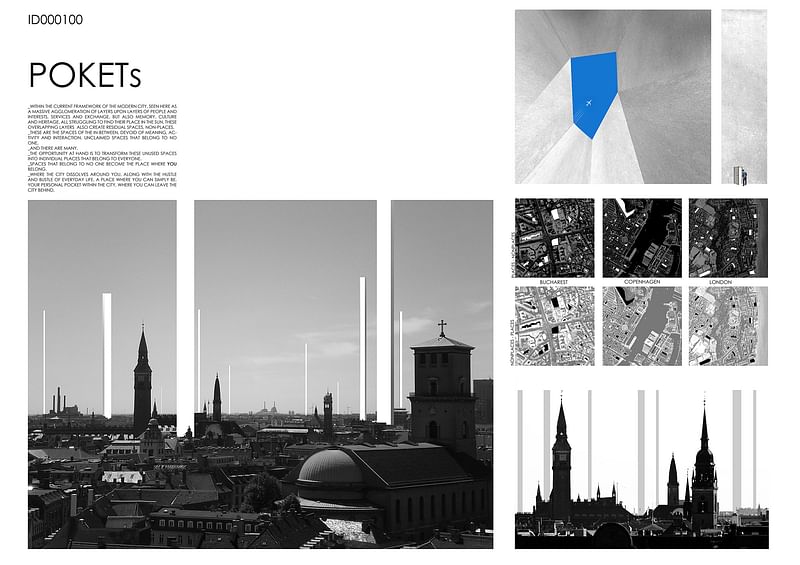
2nd Place: Andrei Theodor Ionita (Bucharest, Romania)
“A response to a non-place with other non-place. A guerrilla response that seeks to realize the urban character of each reality. The interior concept of the proposal is the consciousness of surviving urban of Metropolis!” — Pedro Novo
“The project is similar to the little towers of churches and factories industry. In little horizontal spaces can be built high monuments. This shapes couldn't possibly be built because the foundation might be really big and deep. It would have been better if we could have seen a section of the monument.” — Rafael Gonzalez del Castillo Sancho
“Double impact proposal. In one side intends to address to the “(...)memory, culture and heritage(...)” of a specific place, proposes an oblivion like urban space container, forcing its users for an almost absolute visual silence, enhancing our senses when we later return to it. It addresses the specificity, haptic identity of the nearby city. However at the same time, proposes an urban landmark that imposes itself to the present urban image, contributing paradoxically, if it spreads in an uncontrolled manner, to enhance what it pretends to resolve.” — João Rocha
“Proposal creates a major role on non-places, while even compete with those most important in the city. This really is a big change to the urban identity so this generates a debate on the importance of something like this. And though his only purpose is to increase its role, I find it a fresh and bold idea.” — Fran Silvestre
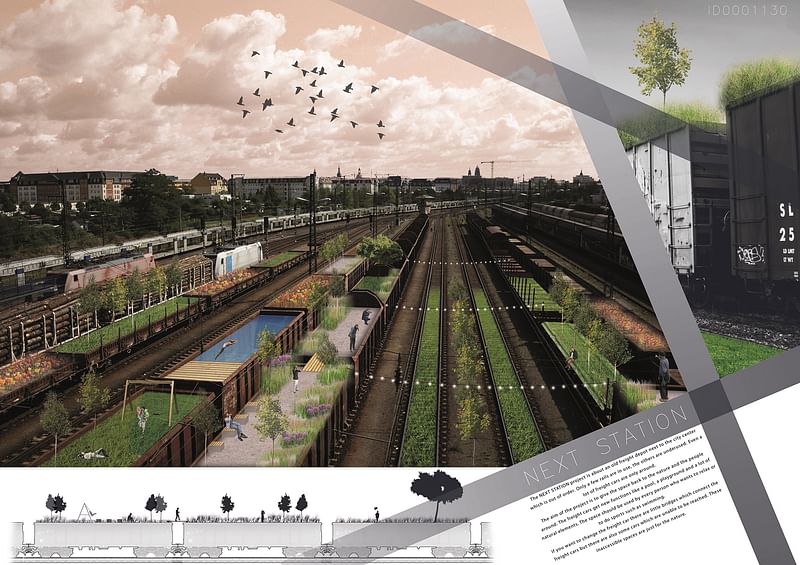
3rd Place: Marc Rieser (Höxter, Germany)
"Function upon function. Starting from a railway landscape with significant impact, proposes, not an alternative new use, because the plot partially maintains its use, but another superimposed function to the landscape, maximizing the people appropriation of the (non)place. Proposes a potential superimposed 'new city' through that place and its specific aesthetics. This overlapped structure as a principle of binding, heal the urban fabric that surrounds it, doesn’t deny the preexistent structure, but reinvent it.” — João Rocha
“One of the most reasonable and intelligent ideas. This not only gives a purpose to a non-place, but also reuses elements that remain unused. Additionally, the equipment is portable and can be easily modified or extended.” — Fran Silvestre
“A very nice panel showing an industrial landscape bring back to nature again, an humanized environment providing leisure. Interesting subject, a well knower solution, that will be nice to be furthermore explored and detailed.” — Carlos Lampreia
Honorable Mentions


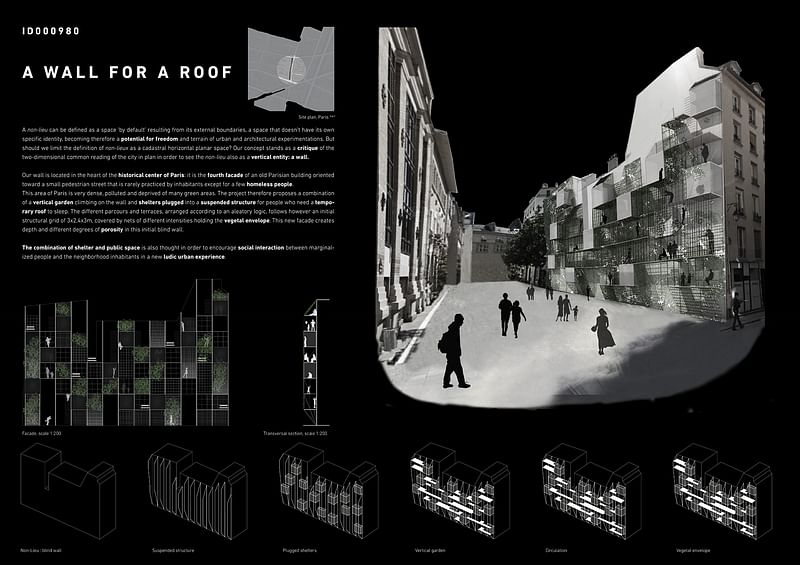
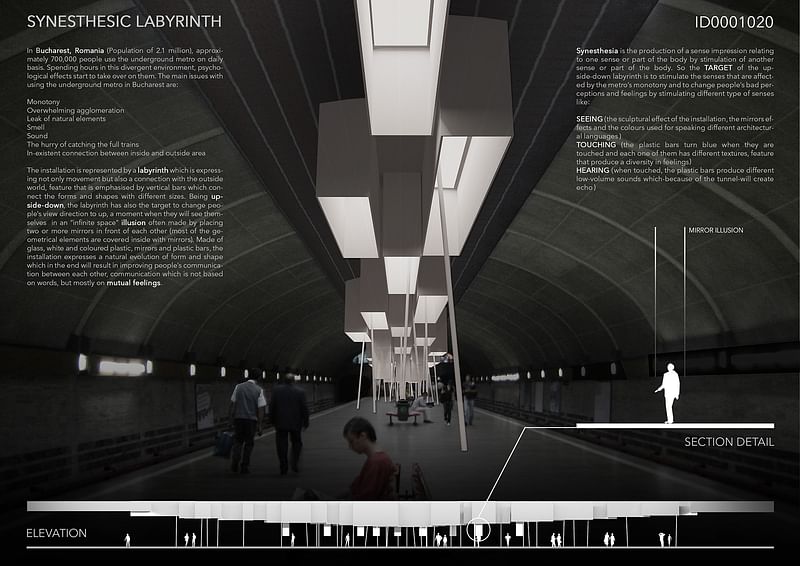

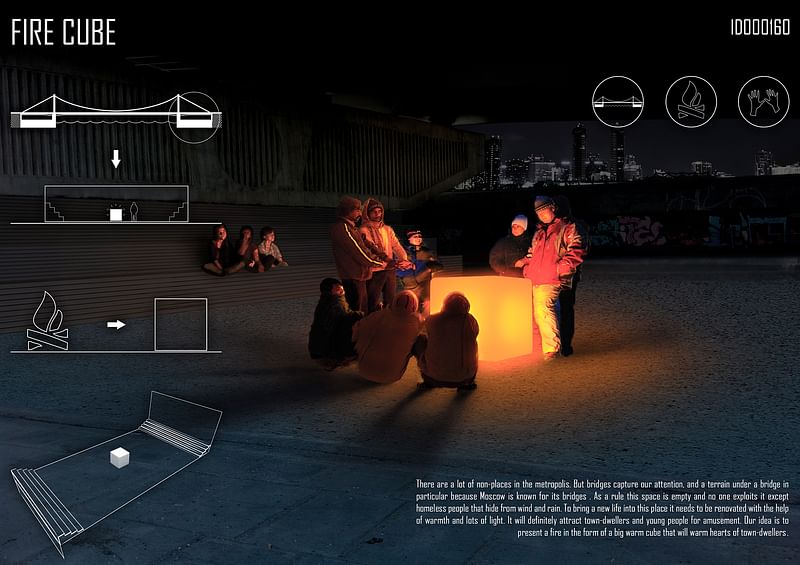

Have a look at previous 24H Competition results.

Share
0 Comments
Comment as :